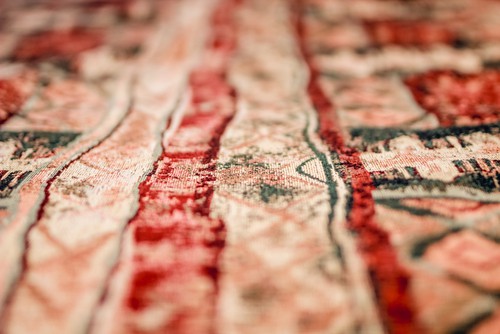
Proactive Measures to Shield Your Rugs from Fading and Wear. Rugs are more than mere floor coverings; they are repositories of art, history, and culture.
A well-preserved rug can significantly enhance the aesthetic appeal and comfort of any home in Singapore.
It embodies both luxury and tradition, inviting a sense of warmth and distinction to an environment.
However, these treasured textiles are prone to fading and wear over time, which can diminish their beauty and reduce their lifespan.
Understanding the factors that contribute to rug deterioration is essential for effective prevention and maintenance.
Understanding Rug Fading: The Culprits
Light Exposure
Singapore’s bright and consistent light, even though not fluctuating through seasons, can still cause significant fading of rug dyes.
Sunlight is a major factor, especially UV rays, which can relentlessly sap the vibrancy of even the most resilient of fabrics.
Certain rug materials, such as silk and wool, can fade over time if left unprotected from the strong, pervasive rays that filter through windows.
Foot Traffic
The ebb and flow of daily life naturally bring foot traffic, which affects rugs situated in busy areas of a home or office.
The pressure and friction from feet can cause the rug fibers to break down and the colors to dull, leading to a worn appearance that can be difficult to restore.
Material Response
Different materials react differently to stressors. Natural fibers like wool may fade gracefully over time, while synthetic rugs might hold their color better but could show wear differently.
The choice of material can greatly affect the rug’s resistance to fading and wear.
Factors Contributing to Wear and Tear
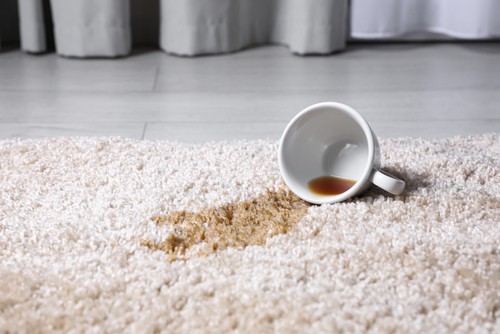
The humid climate of Singapore, combined with indoor environmental factors such as dirt, moisture, and general pollutants, can all contribute to the wear and tear of rugs.
Daily activities such as walking, vacuuming, and accidental spills play a significant role in gradually degrading a rug’s fibers and dye.
Prevention Strategies for Rug Fading
Control Sunlight Exposure
By using curtains, blinds, or UV-protective window films, rug owners can significantly reduce the amount of sunlight that comes into contact with their rugs.
This proactive measure can help to prevent the colors from fading and the fibers from degrading prematurely.
Rotate Your Rugs Regularly
Routine rotation of rugs can distribute wear more evenly. For instance, turning a rug 180 degrees every six months can ensure that no single area is subject to constant wear and tear.
Consider Rug Placement
The strategic placement of rugs within a room can influence their longevity. By situating rugs in areas that do not receive direct sunlight or heavy foot traffic, their lifespan can be extended.
Mitigating Wear: Daily and Long-Term Care
Use Rug Pads
Rug pads not only add comfort underfoot but also protect the rug’s fibers by absorbing some of the impacts from foot traffic.
The type of rug pad used should be carefully selected to suit the specific type of rug and the surface it rests upon.
Implement a ‘No Shoes’ Policy
Adopting a no-shoes policy in the home can dramatically decrease the amount of wear on rugs.
This practice, common in many Asian homes, helps to keep outdoor contaminants off the rugs and reduces the impact of direct pressure from footwear.
Keep Rugs Clean
Regular cleaning is crucial for maintaining the integrity of rug fibers.
This includes vacuuming, spot cleaning, and occasional deep cleaning, which can be done professionally or with specific DIY methods tailored to the type of rug.
Advanced Protective Treatments for Rugs
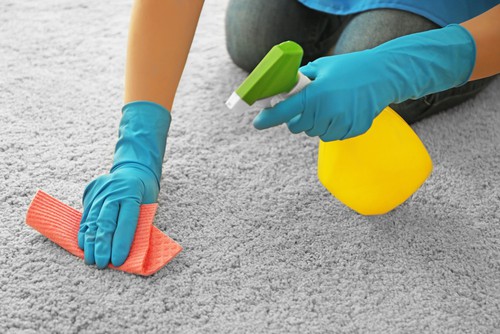
There are professional treatments, such as fiber sealants, that can add a layer of protection to rugs, helping to prevent quick soiling and repelling stains.
While these treatments offer additional protection, they should be carefully considered based on the type of rug and the frequency of use.
Repairing Fading and Wear: When It’s Too Late for Prevention
For rugs that have already sustained damage, there are restoration methods available.
Professionals can often reweave damaged areas, reintroduce lost colors, and reinforce the rug’s structure to restore it to its former glory.
Choosing the Right Rug Materials for Longevity
Selecting the suitable materials is critical when purchasing a rug. Durability, resistance to fading, and ease of care should all be considered to ensure the rug remains a lasting part of the home’s decor.
The Do’s and Don’ts of Rug Maintenance
Understanding what to do — and what not to do — can significantly impact the preservation of a rug.
Always follow best practices for cleaning and care, and avoid common pitfalls such as over-wetting the rug or using harsh chemicals for spot cleaning.
When to Call the Professionals: Rug Restoration Services
Professional services should be sought when rugs display signs of severe wear, persistent stains, or structural damage. Experts in rug care can offer tailored solutions to restore rugs to their original condition.
FAQ on Rug Maintenance
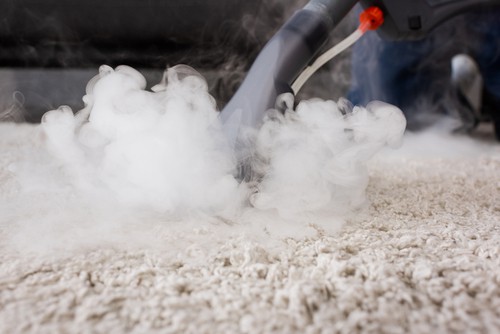
Q: How can I tell if my rug is at risk of fading?
Examine your rug for signs of color lightening, especially in areas exposed to direct sunlight or high foot traffic.
Natural fibers like wool and silk, as well as darker colors, are generally more susceptible to fading. Regular assessment can help spot the early signs of fading.
Q: Is it possible to restore a faded rug to its original color?
While it can be challenging to return a rug completely to its original hue, professional restorers can often re-dye the fibers or use other techniques to improve the rug’s appearance.
The success of color restoration largely depends on the extent of the fading and the rug’s material.
Q: How often should I clean my rug to prevent wear?
It’s recommended to vacuum your rug weekly to remove surface dirt and debris.
For deeper cleaning, professional services are advisable every 12 to 18 months, depending on the rug’s location and use. Immediate attention to spills and stains can also help prevent long-term damage.
Q: What should I do if my rug shows signs of wear?
If you notice signs of wear, such as thinning fibers or reduced pile height, consider reducing foot traffic on the affected area, using a rug pad, or rotating the rug.
For significant wear, consult a professional for repair or restoration options.
Q: Are there any treatments I can apply at home to protect my rug from fading?
Yes, there are UV spray protectants available for home use that can provide a layer of defense against sunlight-induced fading.
However, it’s essential to test any product on a small, inconspicuous area of the rug first and follow the manufacturer’s instructions carefully.
For long-term solutions and high-value rugs, professional treatments are recommended.
Q: What factors should I consider when choosing a rug to ensure its longevity?
When selecting a rug, consider the amount of traffic it will endure, the likelihood of direct sunlight exposure, and the room’s humidity level.
Opt for materials known for their durability, like high-quality wool, which can withstand wear and fading better than some synthetic fibers.
Q: Can I reduce the fading of my rug without compromising natural light in my room?
Yes, you can use UV-filtering window films or solar shades that minimize the harmful rays while still allowing light to enter the room. Also, arranging furniture to shade your rug during peak sunlight hours can help.
Q: How does a ‘no shoes’ policy help preserve my rug?
Shoes can bring in dirt, oils, and abrasive substances that can damage rug fibers and cause premature wear.
Implementing a ‘no shoes’ policy can greatly reduce this type of damage and help keep the rug clean.
Q: Does the color of my rug affect its susceptibility to fading?
Yes, generally, darker-colored rugs will show fading more noticeably than lighter-colored rugs.
Additionally, the type of dye used and the dyeing process also affect how prone the rug is to fading.
Q: If my rug is fading or wearing out, should I attempt DIY fixes or go straight to a professional?
Simple preventive measures and minor cleaning can be performed at home.
However, for fading, significant wear, or structural damage, it’s best to consult a professional who can assess the rug’s condition and provide the appropriate restoration services.
Q: What kind of rug pad should I use?
The choice of rug pad depends on the type of flooring and rug you have.
Generally, a felt pad offers good cushioning and insulation, while a rubber pad provides non-slip benefits.
For the best results, a combination of felt and rubber can provide both cushioning and grip.
Proactive Measures to Shield Your Rugs from Fading and Wear – Conclusion
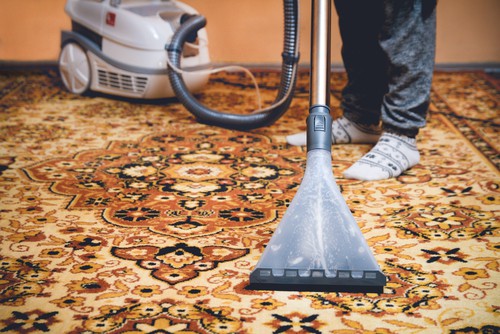
Preserving the intricate beauty of rugs requires a proactive approach to care and maintenance.
By employing the right strategies, rug owners can ensure that their precious textiles remain vibrant and intact for years to come.
Take the time to evaluate the care regimen for your rugs. Consider if it is time to enhance your practices or seek professional advice to ensure the longevity of your prized possessions.
Your rugs represent a significant investment and an integral part of your home’s character—treat them with the respect and attention they deserve.
Are you seeking professional and reliable house cleaning or rug/carpet cleaning services in Singapore? Contact us today!
